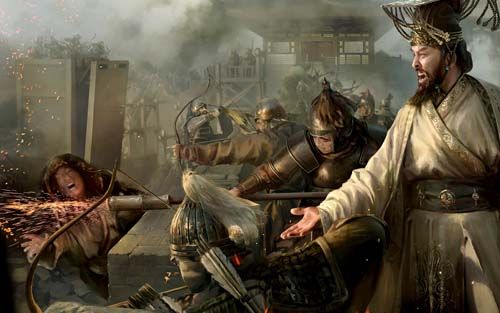
Stronghold: Warlords
(as Stronghold Warlords)
สตรองโฮลด์ วอริเออร์
บทสรุปเกม
WALKTHROUGH
Genghis Khan
Stronghold: Warlords

Genghis Khan: Coming of the Mongols
Gengis Khan was born Temüjin Borjigin. His father led the Borjigin clan of the Mongols but was assassinated when Temüjin was only 9 years old. His father’s clan members deserted the family and it was left to his mother to look after him and his brothers. It was a hard life of poverty and his mother taught him the key skill of survival and the benefit of making strong alliances. Through his alliance with Toghril, khan of the Kereit tribe, Temüjin formed an army of 20,000 soldiers and defeated the rival Merkit tribe. His power steadily grew and eventually he was in the position to take on and defeat the formidable Tartars, killing all the adults to ensure there would be no future uprising. Soon after this though, Temüjin and Toghril fell out and Toghril allied himself to the Naimans, the last of the great rival tribes. Temüjin’s army defeated the Naimans and in 1206, he was crowned the leader of the Great Mongol Nation. He assumed the title of Genghis Khan, meaning universal leader, marking the start of the Mongol Empire. Much of Genghis Khan’s success came from the political and military reforms he introduced. The size of the Mongol Empire meant it was comprised of a number of different races and ethnicities. These people were treated as equals and all were considered to be Mongols. Religious tolerance was a key principle, allowing people to practice different religions without fear of reproach. Key individuals were promoted on merit, rather than family ties as it had been in the past, and were afforded a greater degree of autonomy, in return for their unwavering loyalty. Genghis Khan was also good at adapting rapidly to changing circumstances; although the Mongols are synonymous with horseback warfare, it was obvious this was not going to be effective at sieging cities. He therefore employed Chinese engineers to develop siege weapons such as ladders and catapults, enabling the Mongol army to siege fortresses and expand the empire even further.






















